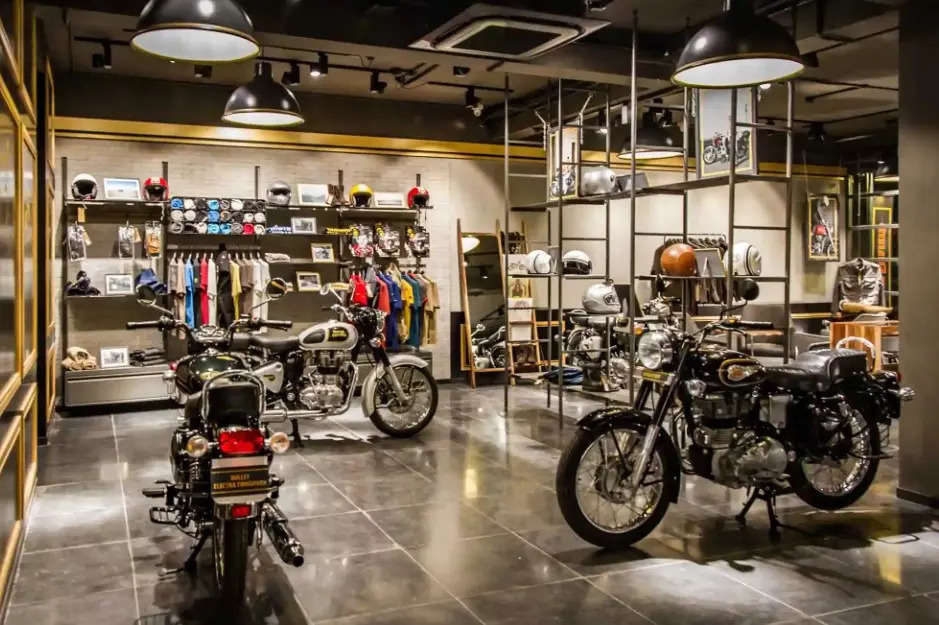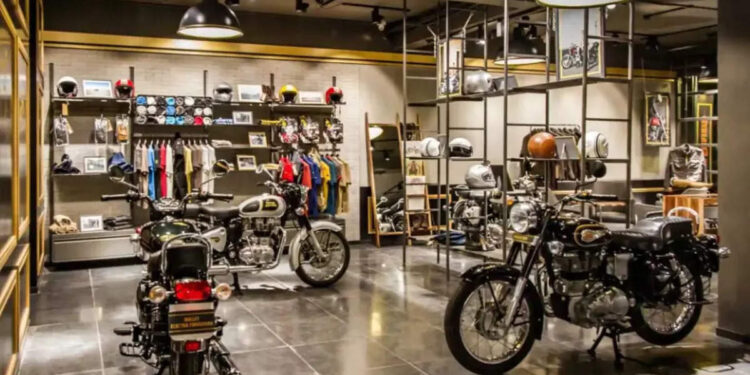
New Delhi: As Royal Enfield begins spreading its global presence, the growth mantra is pretty straightforward and devoid of too many complexities.
“Very simplistically, we divide our export markets into two. One is the richer countries, such as the US, Europe, Australia, Japan, New Zealand and Korea, where the markets are there. They are not growing, maybe even declining, but affordability is very strong,” said Siddhartha Lal, Managing Director and Chief Executive Officer of Eicher Motors, the parent company of Royal Enfield.
These observations formed part of the Q&A session with analysts which took place on May 11 following the fourth quarter results of FY 24. As Lal put it, even if growth was faltering in some of these countries, the bottom line was that their residents still had enough disposable incomes to acquire a midsize motorcycle.
“If people like something, they’ll pick it up. I mean if it’s USD 5,000, USD 6,000, USD 7,000, that is not a problem. The offer is great. The bike is relatively affordable to these guys and absolutely amazing value. Our market recall is very strong in these markets,” he said.
Simply put, this group represents one set of markets where there is not huge growth but still offers enough potential for Royal Enfield though this is “within the spectrum of the market rather than growing the market as such”. Needless to add, these markets are very important also from a profitability angle.
Smaller Indias
Then come the high potential markets in Latin America and Southeast Asia where there is a possibility of creating ‘mini Indias’. Lal said this would be the guiding lever in these countries after having imbibed some important lessons over the past many years.
“We are focusing on some of them to really penetrate deeper to make it an India-like idea for us. So we are in a virtuous cycle in India where we have strong distribution, strong demand, strong residual value, strong service network, great brand recall and that promotes all of these things again. The more demand comes in and it is then a virtuous cycle which is what we are trying to do in some of the LatAm and Southeast Asian markets,” he said.
From the company’s point of view, these are akin to new home markets in terms of creating a similar infrastructure be it in areas of distribution or dealerships. “We may even have our own store once in a while but it is really about getting deep into a few of these markets where we see long-term potential in the next 5, 10, 15 years,” he explained. This would ideally translate into solid growth and emerging as a significant motorcycle player in these countries.
B Govindarajan, CEO of Royal Enfield, added that people should eventually enjoy owning and riding the company’s bikes. “In a situation where the macroeconomics are not so good, that is not the time to go and actually look at expansion in an aggressive way. We are a long-term aggressive company and do not do anything short term,” he elaborated.
Riding community
The need of the hour in international markets was to have one’s own subsidiaries along with a team on the ground constantly looking at market growth, brand building and community building along with creating rides “wherein we can be part of their community and ride motorcycles”.
Right now, the world is still volatile with geopolitical tensions persisting in the form of two wars playing out in Europe and West Asia with no signs of an end anytime soon. A host of countries are also holding their elections this year which means new leaders could take a relook at trade policies.
Big nations like the US and Europe are already turning protectionist when it comes to imports of Chinese-made electric cars. “When the market opens up, you will see Royal Enfield riding the wave in the international market. I see some good green shoots now,” said Govindarajan said.
Lal reiterated that FY 24 was “absolutely stellar” for the company which grew from strength-to-strength each quarter, and crossed new milestones in business and financial performance. “On the product development and manufacturing and quality front, we have continued to push the boundaries and are now absolutely amongst the best in the world. This is evident from the fact that we have got the world’s best cruiser and possibly the world’s best adventure motorcycles,” he said.
Extreme focus
In his view, Royal Enfield’s performance and success last year was “particularly special” as it achieved all of that in the light of a new wave of competition. “It is about our dedication to premium motorcycling with extreme focus and of course, the belief that our products are a step ahead,” added Lal.
The good part is that even though the product cycle is four to five years in terms of conceptualising to finally hitting the road, the company has always been a step ahead of competition and even when new rivals were to come in. “We have already anticipated consumer demand more than competition and been ahead of the curve,” he said.
By the end of the day, it was this entire holistic consumer experience that mattered and this is what “we are obsessed with” at Royal Enfield and something everyone within the ecosystem thinks about daily. “More than competition, more than investors, more than anything else, we think of our consumers and we are on the motorcycles, riding and understanding future bikes, competition bikes and electric bikes,” said Lal.
As he put it, the entire Royal Enfield team is absolutely obsessed with and focused on that level of consumer experience. Beyond that, it is about understanding them better on their pains, joys and what will motivate them. “And that is the difference. It is a holistic and really detailed thoughtful experience that we provide our consumers. And we continue to remain super focused on doing just that,” signed off Lal.















